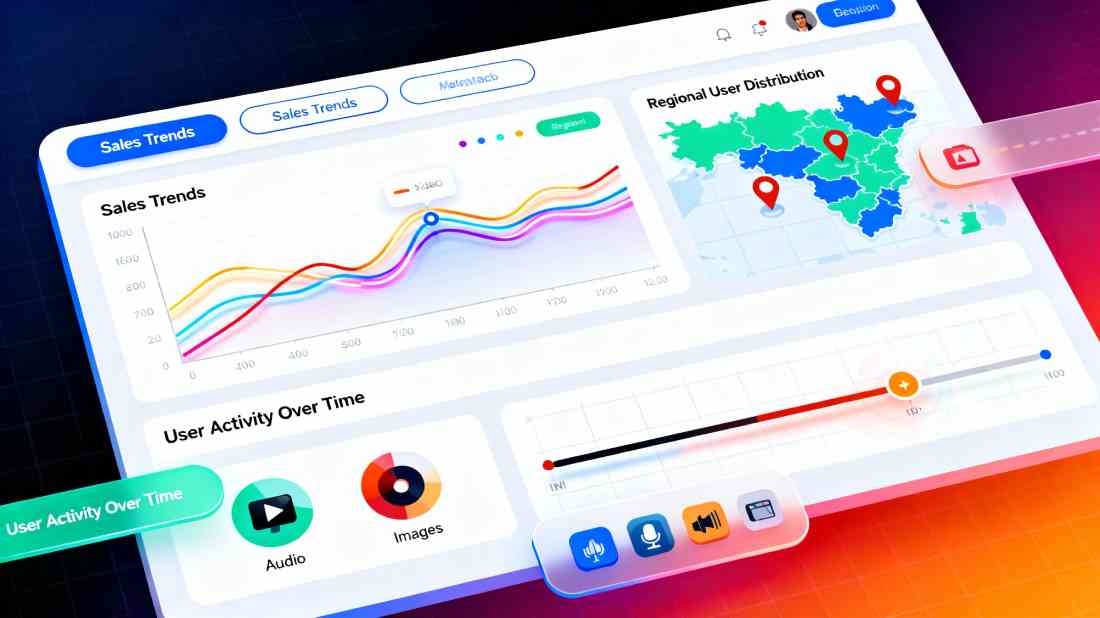Interactive web design involves creating websites that actively engage users through various elements and features, making the experience more dynamic, personalized, and engaging. Here’s a comprehensive overview of key aspects and examples:
Interactive web design is a dynamic approach to creating websites that actively engage users through various interactive elements, encouraging participation and enhancing user experience. This type of web design integrates multimedia, animations, clickable components, and responsive features that adapt to user actions, making the site more engaging and user-friendly.
Interactive Web Page Design
Interactive web page design involves structuring pages that respond to user interactions such as clicks, hover effects, form submissions, and scrolling. This design emphasizes usability and engagement, making websites more inviting and easier to navigate. Techniques include animated menus, interactive buttons, collapsible sections, and multimedia integration, which collectively make browsing a more immersive experience.
Interactive Web Design Templates
Templates specifically designed for interactive web design come pre-equipped with engaging features like sliders, pop-ups, video backgrounds, and scroll effects. These templates serve as a foundation for building websites with minimal effort while maintaining visual appeal and functionality. Platforms like ThemeForest, TemplateMonster, and Canva offer numerous customizable interactive templates for various industry needs.
Interactive Map Web Design
Interactive maps allow users to explore geographical data, locations, and routes interactively. Features include zooming, clicking on regions for detailed info, search functions, and real-time data updates. Examples include real estate sites, travel portals, and event location maps, which improve user engagement and provide valuable information visually.
Interactive Web Design Tools
Tools that facilitate interactive web design include:
-
Webflow: Drag-and-drop interface with animation capabilities.
-
Figma & Adobe XD: Design tools for prototyping interactive features.
-
GreenSock (GSAP): Animation library for complex effects.
-
JavaScript Libraries: React, Vue.js, and Angular for dynamic content.
These tools simplify the process of creating, testing, and implementing interactive features.
Interactive Web Design Tutorial
Learning to create interactive websites involves tutorials covering HTML, CSS, JavaScript, and popular frameworks. Tutorials include building sliders, dropdowns, modals, and animations step-by-step, helping beginners and professionals develop skills efficiently.
Interactive Media Web Design
Incorporating media such as videos, audio, animations, and virtual reality creates immersive websites. Interactive media enhances storytelling, e-learning, and marketing campaigns by engaging users visually and emotionally, encouraging longer interaction times.
Interactive Timeline Web Design
Interactive timelines display historical events, project milestones, or process flows engagingly. Users can scroll or click on timeline points to reveal details, images, videos, or other media, making complex information easily digestible and visually appealing.
In Interactive Web Design JS Refers to the Programming Language __
In this context, JS refers to JavaScript, a scripting language that forms the backbone of interactivity on websites. JavaScript enables real-time responses to user actions, such as animations, form validation, dynamic content updating, and interactive graphics.
Interactive Web Design Meaning & Definition
Interactive web design refers to creating websites where users can interact with content rather than just passively view information. It involves designing responsive, engaging, and multimedia-rich user interfaces to foster communication, retention, and interaction, ultimately improving user satisfaction.
What is an Interactive Website Design?
An interactive website design employs features like clickable elements, animations, forms, real-time updates, and multimedia components to create a user-centered experience. These websites encourage active participation, making them more memorable and effective for business or information dissemination.
How Do You Create an Interactive Website?
Creating a site involves planning user flow, designing engaging interfaces, coding with HTML, CSS, JavaScript, and integrating multimedia and third-party tools for animations and interactions. Testing responsiveness and user experience ensures a seamless and engaging user journey.
How Much Does It Cost to Create an Interactive Website?
Costs range from a few hundred dollars for template-based projects to thousands for custom development, depending on:
-
Complexity of features
-
Design customization level
-
Development time and expertise needed
-
Use of advanced tools or multimedia
Can a Static Website Be Interactive?
Yes, static websites can incorporate interactivity through client-side scripting like JavaScript, enabling features such as image sliders, pop-ups, and forms without server-side programming.
Key Principles and Frameworks
-
The 7 Cs of a Website (Content, Context, Community, Customization, Communication, Connection, Commerce) ensure a well-rounded, engaging site.
-
The 7 Principles of Web Design focus on usability, accessibility, and aesthetic balance.
-
The 7Cs of Digital Marketing include Customer, Content, Community, and more to foster digital success.
-
The 7 Pillars of Digital Marketing include SEO, social media, email marketing, content marketing, and others.
-
Five Golden Rules of Web Design: simplicity, clarity, consistency, speed, and user focus.
-
Five Principles of Design: balance, contrast, emphasis, movement, unity.
-
Major Components of a Web Page: header, navigation, content, sidebar, footer.
-
7 Golden Rules of UI Design: feedback, closure, error prevention, reversibility, control, memory, consistency.
This overview highlights the importance of interactivity in modern web design, blending aesthetics with functionality for a compelling online presence.

